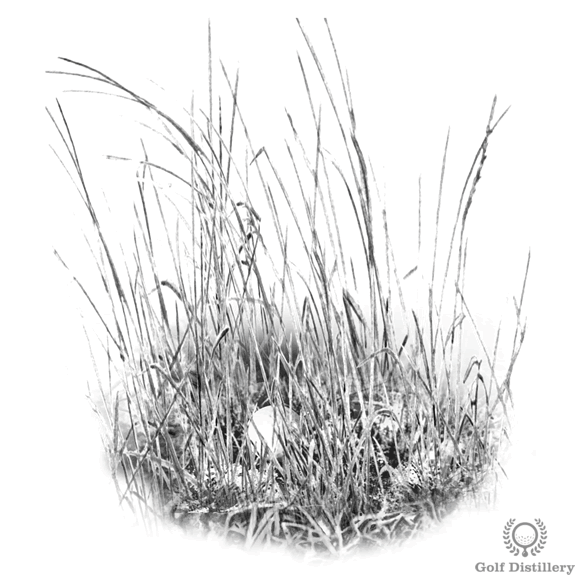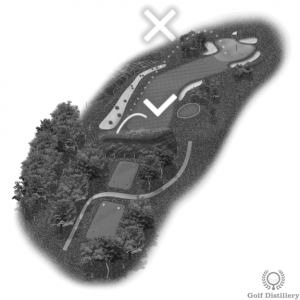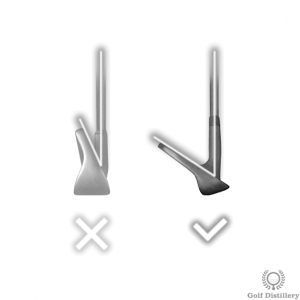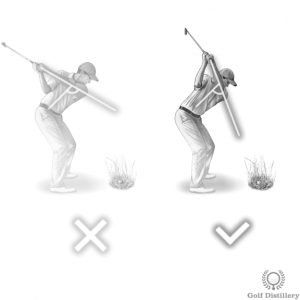Join Our Senior Golfers Newsletter!
Sign up today and receive your free Golf After 60 Bonus Stretch Guide!
Water hazards have long been notorious in the game of golf for their ability to strike fear into the hearts of even the most seasoned players. From picturesque lakes to meandering streams and treacherous ponds, these natural barriers add complexity and challenge to golf courses worldwide. In this article, we will explore the nature of water hazards, understand their impact on the game, examine strategies for overcoming the fear they induce, and discuss techniques for successfully navigating these challenging obstacles.

Water Hazards: How to Conquer the Intimidating and Challenging Obstacles
The Psychology of Water Hazards:
The presence of water hazards can trigger a range of emotions in golfers. The sight of shimmering blue ponds or lakes lining fairways can induce anxiety, doubt, and fear of errant shots. The psychological impact of these hazards often leads to poor decision-making, altered swing mechanics, and an overall decline in performance. Understanding and acknowledging these emotions is the key to developing strategies to overcome them.
Analyzing Water Hazards:
Water hazards come in various forms, such as lakes, rivers, creeks, or ditches. To conquer water hazards, it’s essential to analyze their placement and impact on the golf course. Study course layouts and yardage guides to determine the distance and angles you need to clear these hazards. Identifying landmarks and using them as reference points will help you approach water hazards with a strategic mindset.
Risk Management:
Managing risk is crucial when dealing with water hazards. To avoid unnecessary penalty strokes and maintain your confidence, consider playing safer shots that will keep you away from these hazards. Evaluate the risk versus reward on each shot and choose the option that aligns with your skill level and comfort zone. By making calculated decisions, you can minimize the chances of landing in the water and increase your chances of success.
Pre-shot Routine and Visualization:
Developing a consistent pre-shot routine and visualization process is crucial when confronting the challenge of water hazards. Before every shot, take a few moments to visualize the desired outcome, envisioning the ball safely landing on the fairway or green. This mental rehearsal technique not only boosts confidence but also helps in maintaining focus and eliminating negative thoughts associated with water hazards.

Developing Necessary Skills:
To confidently tackle water hazards, develop the necessary skills required for successful shots over water. Practicing with purpose is key. Work on your distance control to ensure you can consistently hit the ball the required distance to clear the hazard. Additionally, focus on accuracy and shot-shaping to avoid the hazards’ edges and increase your chances of staying dry. Seek guidance from a golf professional or instructor to refine your technique and get feedback specific to your swing.
Strategic Club Selection:
Choosing the right club is vital when dealing with water hazards. Opting for a club that allows you to comfortably clear the hazard without excessive effort or risk is often the wise choice. When in doubt, select a club that provides confidence and allows for more control over the shot. Remember that maintaining composure and staying committed to your club selection is crucial for success.
Overcoming Fear and Building Confidence:
Fear can be a golfer’s worst enemy when confronting water hazards. Overcoming this fear requires a combination of mental fortitude, practice, and positive reinforcement. Start by gradually exposing yourself to water hazards during practice sessions, focusing on building confidence through successful shots. Visualization techniques, positive self-talk, and deep breathing exercises can also help calm nerves and instill a sense of control over the situation.

Strategic course management is vital when dealing with water hazards. Assess the layout of the hole and plan your shots accordingly. Weigh the risks of challenging long carries versus safer lay-up shots. Take note of prevailing winds, slopes, and hazards’ set-up to optimize your approach. Avoid taking unnecessary risks that may lead to disaster and instead focus on playing smart, high-percentage shots that minimize the chances of landing in the water.
Learning from Mistakes:
Even with the best strategies and techniques, mistakes may happen, and errant shots may find their way into the water. Instead of dwelling on these setbacks, view them as learning opportunities. Analyze the cause of the mishap, identify any patterns, and find ways to adjust your strategy moving forward. Remember that even the most successful professional golfers have faced water hazards, and learning from mistakes is an integral part of improving one’s game.
Here are some additional tips that may be helpful:
By following these tips, you can improve your water hazard game and reduce your chances of scoring penalty strokes. This will help you to play better golf and lower your scores.
If you are unsure about the rules of golf for water hazards, it is a good idea to consult with a golf professional or with the course staff.
Find rules of golf at the usga website
Conclusion:
Water hazards may be intimidating and challenging, but with careful planning, the right mindset, and dedicated practice, they can be conquered. By understanding the psychology behind water hazards, analyzing their impact on gameplay, and implementing risk management strategies, golfers can navigate these obstacles with greater confidence. Building necessary skills, employing strategic club selection, and implementing effective course management techniques contribute to successful outcomes. With perseverance and a positive mindset, you can turn water hazards from dreaded obstacles into opportunities for personal growth, resilience, and success on the golf course.

Golf Tip: How to Hit from Tall Grass from Golf Distillery
Golf course architects can use a variety of design options in order to punish bad shots or to protect holes from golfers looking for shortcuts. Amongst those are hazards such as water and sand bunkers, rough, and even tall grass.
Often referred to as fescue, tall grass is essentially used as an additional length of rough that can also grow in otherwise waste areas around holes. Whenever you hit a bad shot into fescue you instantly know you are in trouble.
Follow the tips below for instructions on how to hit from tall grass and in order to limit the damage caused by hitting a golf shot into fescue.

While it may be tempting to try to reach the green from the fescue following a bad drive that leaves you with only 150 yards to the hole you better leave those shots to the professional golfers. Indeed, only the pros and the uniquely skilled golfers can generate enough club speed that is required to power through tall grass without seeing much impact on their shots.
For the average golfer, it is best to accept the situation, take the medicine, and aim for the safest way back into the fairway. Failure to do so can result in hitting the ball deeper into the fescue, which can be fatal to your scorecard or to your match.

Now that you are resigned to laying up (instead of trying to hit a normal shot) pick a club that will give you the best chance of escaping the fescue. Depending on how deep into the tall grass the ball is located, and how far away from the fairway you are you may elect to take the club with the highest loft in your bag. That means taking your lob or sand wedge, which should give you between 60 and 56 degrees of loft, and the best chance to see the ball fly out of the fescue and back into safety.

The biggest issue with tall grass is that it will grip into your clubhead and shaft and slow down your clubhead speed as it travels towards the ball. If the grass is tall enough, it may even be difficult for the club to actually hit the ball at all. In order to increase your chances of making contact with the ball, try to tweak your swing so that it is more vertical in nature. That is in contrast to a flatter swing that would in this case see the club travel through a lot of grass on its way towards hitting the ball.

Even if you tweak your swing so that it is more vertical than flat, your club is still going to travel through grass that will try to grip and twist your clubhead. In order to maintain the clubface in its correct angle grip the club more tightly than you normally would. This will allow you to power through the grass without too much impact into your club and ultimately into your shot.

Again, you’ll need for your clubhead to travel through a lot of thick and long grass on its way to the ball. And that grass will slow down your club significantly so you’ll need plenty of club speed to go through it all. Therefore, don’t try a little delicate swing but rather go for it and swing hard at the ball. Even with a faster swing, the tall grass may not even allow for a follow-through, which is fine in this circumstance.





Comments
[…] is a challenging game, even for seasoned […]